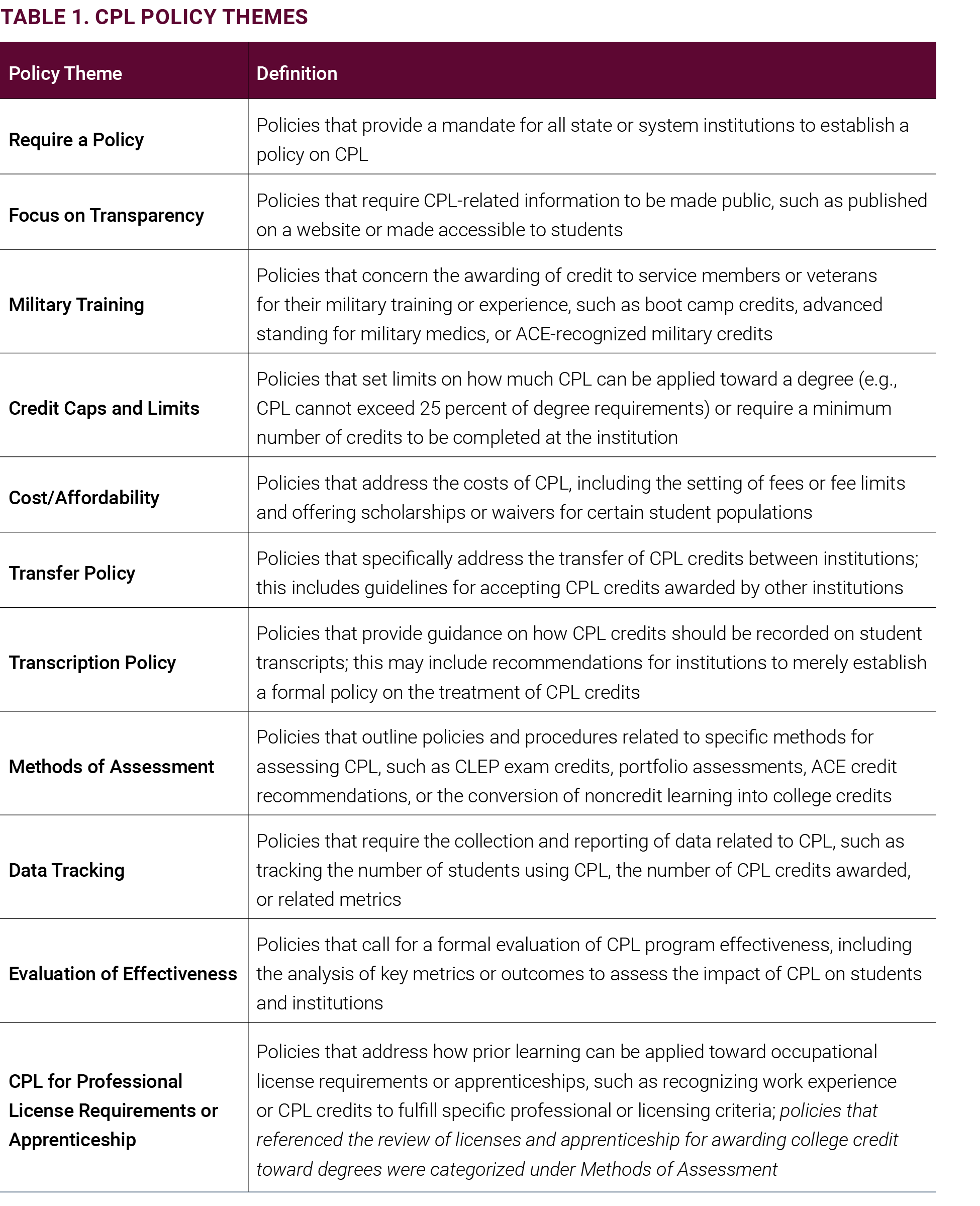Adult learners compose over one-third of all undergraduate students, and support for adult learners who are pursuing postsecondary credentials is essential.1 About 18 percent of learners in this age group have some college education but no degree and are primed to reengage with postsecondary education in order to complete a credential.2
Credit for prior learning (CPL) refers to a wide range of strategies and methods used to recognize and award college credit for skills and knowledge that students may have acquired outside of a formal college setting, including formal noncollege learning, military training, work experience, informal learning, volunteer work, and life experiences. Research has shown that CPL is an effective strategy to promote adult students’ credential completion while helping students to save time and money in the process.3 In addition, CPL helps to boost credential completion for important student subgroups, such as low-income and minority students as well as military learners.4
For many years, CPL was a relatively niche offering at postsecondary institutions that had dedicated adult-serving programs; this is changing, however, in part due to the growing recognition of CPL’s role in supporting adult credential completion. Today, states and postsecondary systems are taking an active role in encouraging and supporting these programs at public colleges and universities. Such state- and system-level strategies are essential to ensure the broader, long-term adoption of CPL, with model policies that focus on establishing common assessment practices, providing guidance on CPL quality standards, creating new requirements for tracking and reporting on CPL use and impact, and articulating pathways for CPL credit mobility through system-wide transfer policies.
This database provides access to more than 360 examples of state and system CPL policies. Policymakers, institutional leaders, and stakeholders can use this centralized resource to aid in understanding the range of CPL policy approaches and to guide in crafting new policy initiatives. The policy examples originate through a range of sources, including legislation, coordinating or governing boards, state agencies, administrative codes, governors’ offices, and institutional systems.
The database allows users to search CPL policies for all 50 states as well as the District of Columbia and Puerto Rico, with filters for location, source, and policy themes. The data focuses primarily on policies that were established in 2010 and identified in 2024. Some policies may have since been amended, updated, replaced, or voided.
Policies in the database are organized into 11 policy themes.

Note: This table is included as table 1 in the accompanying report,
The National Landscape of Credit for Prior Learning: Effective State and System Policies for Success and Equity.
NOTES
(1) ACE’s analysis of data from National Postsecondary Student Aid Study 2016 (NPSAS:16), which included degree-granting and non-degree-granting institutions. Working while enrolled in college excluded work-study.
(2) Benjamin Berg, Jennifer Causey, Jeremy Cohen, M. Ramadan Ibrahim, Matthew Holsapple, and Doug Shapiro,
Some College, No Credential: A 2024 Snapshot for the Nation and the States (National Student Clearinghouse Research Center, 2024).
(3) Rebecca Klein-Collins, Jason Taylor, Carianne Bishop, Peace Bransberger, Patrick Lane, and Sarah Leibrandt,
The PLA Boost. Results from a 72-Institution Targeted Study of Prior Learning Assessment and Adult Student Outcomes (Council for Adult and Experiential Learning and Western Interstate Commission for Higher Education, 2020, revised December 2020); Higher Learning Advocates,
How Credit for Prior Learning (CPL) Can Benefit Today’s Students, Backgrounder: February 2023 (Higher Learning Advocates, 2023).
(4) Klein-Collins et al.,
The PLA Boost; Rosa M. García and Sarah Leibrandt,
The Current State of Higher Learning Policies (Center for Law and Social Policy and Western Interstate Commission for Higher Education, 2020).